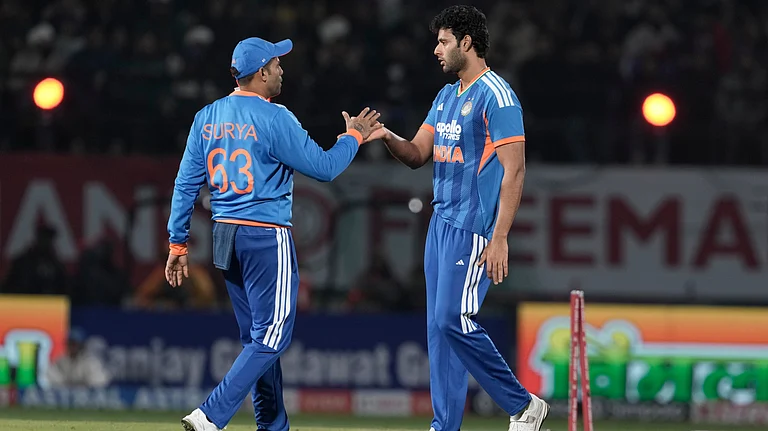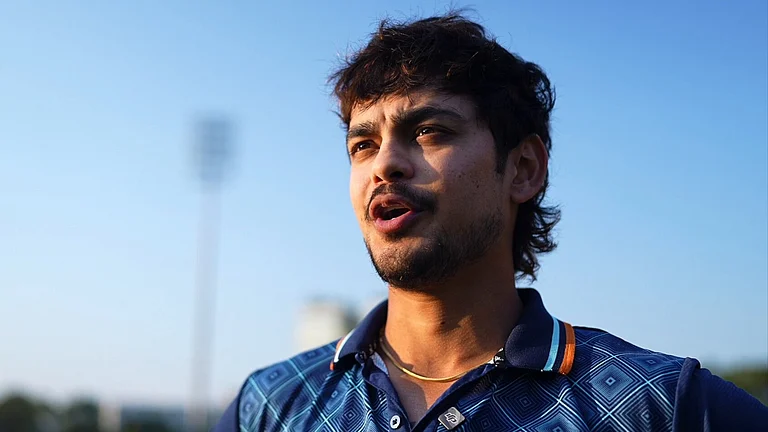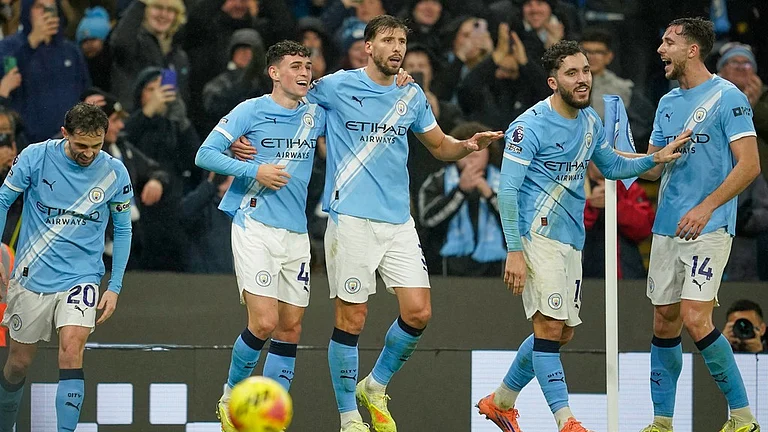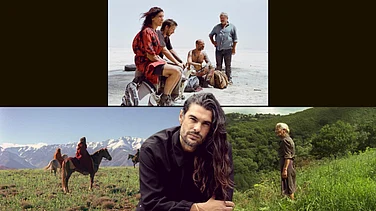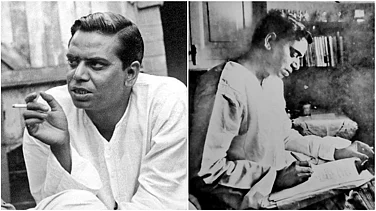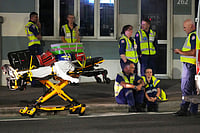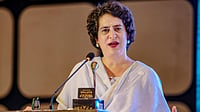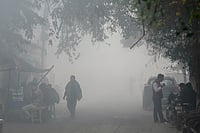"Dekh tere sansar ki haalat kya ho gayi Bhagwan, Kitna badal gaya insaan; Urea bhi becha, telecom bhi becha, bhaag gaya Sukh Ram Lagaa di mandir masjid ki dukaan"..
THUS goes the refrain of Ek Ajnabi Laash, a play on communal harmony staged by a decade-old the-atre group, Naujawan-e-Hind (NEH), to flag off Mumbais two-day street theatre festival, Bol Jhamoore.
Twenty-two groups from all over the country performed with a few dholaks, little money but lots of gusto in the streets and squares for the people. "This makes it the first effort of its kind at a national level," says Pervin Varma, manager, communication, Child Relief and You (CRY), which organised the event along with NEH.
Street theatre, which gained momentum during the Emergency, slipped into oblivion largely after activist Safdar Hashmi was killed while performing a politically-sensitive play in 1989. The festival highlighted issues ranging from AIDS to alcoholism, problems of women and girls, literacy, the plight of street children and child labour.
Says S. Ramachandran of NEH: "The actors in street plays dont act, they interact." The plays reflect all the elements of the original street theatre. A proscenium play is scripted, well-rehearsed and performed by trained actors before a knowing and involved audience. "Our theme voices the feelings and troubles of the people we interact with during our various communication programmes," explains Rachana Ghosh of Muktadhara, a 15-year-old Muslim womens group from West Bengal. This "flexible theatre", as she prefers to call it, is a medium of communicating the findings, beliefs and solutions to social problems rather than theatre for its own sake. Muktadhara, for instance, works in the tiniest of villages of West Bengal to educate women on their rights and make them independent. The outcome of workshops provides the material for the plays. Often, there is just a rough outline for the script and the actors improvise on stage. The school girls group from Bishop Cotton School of Bangalore staged Gauri ki Kahani, a play on the plight of a girl child. "All the matter," says Pravisha Bajpai, the student who played the narrator, "came from discussions and workshops we held in school and outside."
Some groups used traditional Indian folk forms and concepts to prop up the play. For example, Muktadhara depends on folk wedding tunes when its play symbolises a marriage as bonded labour. And NEH enacted a "kabaddi" match between Hindus and Muslims to highlight its theme of communal harmony. Street plays often incorporate topical events. The play, Ek Ajnabi Laash, dwelt at length on the recent spate of scams that have rocked the countryfrom the urea to the telecom scandals.
Several groups brought along members who were victims. Bangalores Maadhyam is made up of eight slum childrenit picked up the issue of street children in its presentation. Says Ashok Kumar, a stage actor who set up Maadhyam: "They can convey the state of their brethren who are made to leave school to work and supplement the family income." "I have tried to explore the therapeutic values of street theatre," says Kumar. Street theatre has managed to give a voice and a form of expression to these children.
The message in the medium often triggers explosive reactions. For instance, a play on drugs was interrupted when a drug peddler started fighting with the performers. "But there were positive responses as well," points out Ramachandran. The same play encouraged almost a dozen addicts to seek detoxification. Plays on AIDS ended up in intense discussions with sex workers in Bombays red light area. NEH exhorted the people to inform the police about peddlers, throwing in attractive monetary rewards for the do-gooder. "The response was encouraging," says Varma. CRY and NEH are looking to organise the festival annually. And, the groups are being advised to fine-tune their plays. To this end, each group has been sent an evaluation report and suggestions, which were listed by several theatre personalities who moved around with the groups. Next time, the organisers are determined to make the plays more forceful and memorable.
.







